2023 was quite a year for "Fake Out of Home advertising" or "Fake OOH." This new form of advertising quickly gained traction over the past year, especially among fashion and lifestyle brands, and has been the talk of marketing circles ever since.
FOOH ads have been taking the advertising industry by storm, but what exactly does it mean?
The wording for this new-age marketing has yet to be 100% defined. Mixed Reality Videos, Augmented Reality Videos, Virtual Reality Videos, Fake Ads, CG Ads, and CG Marketing are some of the terms used to describe it.
Essentially, Fake Out of Home is a form of advertising that combines computer-generated imagery (CGI) and real video footage to create an illusion of an immersive, short-form ad that appears as if it is taking place in a real-world location.
These ads are then shared on social media platforms, such as Instagram and TikTok, to reach a larger audience. Let's explore what FOOH ads are and why you should care about them.
Fake OOH advertisements, or as we like to call them, "Mixed Reality Videos," are compositions of real videos with computer-generated imagery (CGI). In summary: putting/tracking 3D objects in a conventional video.
In general, the use of CGI is nothing new; Hollywood has been doing that for quite some time already. In fact, the first feature film to use CGI was "Westworld" (1973), and the first film to ever use CGI was "Vertigo" (1958), a movie by Alfred Hitchcock. It was used in the film's opening credits.
If you want to know more about this new marketing trend, read our 2024 guide on everything you need to know about FOOH.
As you can see, CGI has been around for a long time; most of us just haven't noticed it. So, why is it such a big deal in the world of advertising now?
Fake Out of Home ads offer a unique and innovative way for brands to showcase their products or services. With the rise of social media and short-form content, these ads are perfectly suited to grab the attention of younger audiences constantly scrolling through their feeds.
Here are the top 5 benefits of using FOOH ads for your brand:
FOOH ads are short-form in nature. These ads can quickly rack up millions of views because of their entertainment (and often shock) value. Just look at Maybelline on Instagram, for example. Their typical content gets about 200,000 views on average, but their Fake Out of Home ads easily reach millions of views!
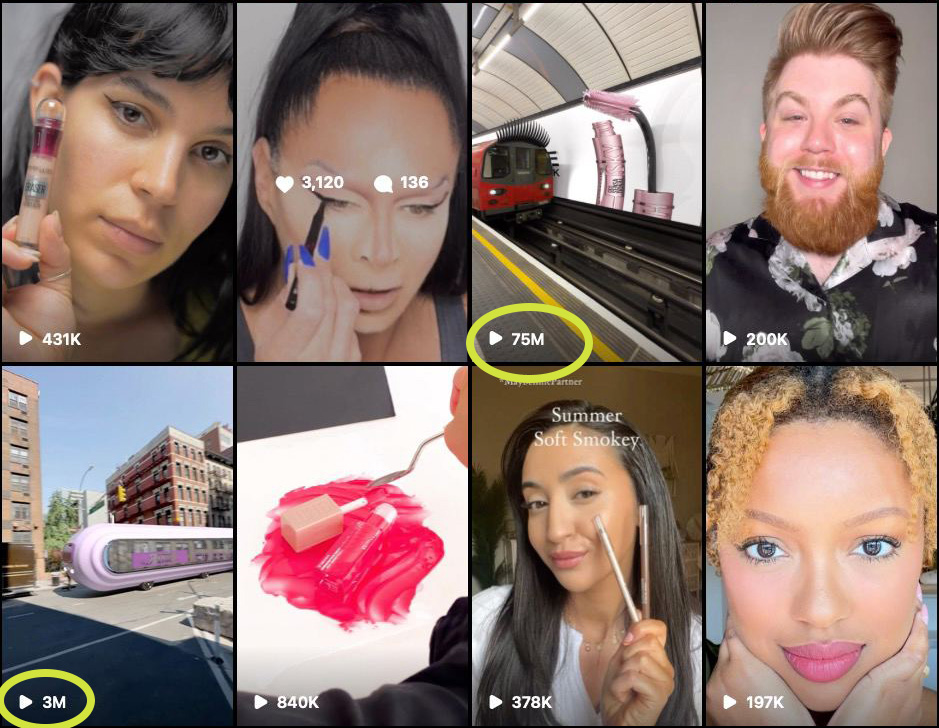
While the 8-minute attention span claim has been debunked (multiple times!), attention is still money. The true claim?[1] Good storytelling keeps people hooked for longer - the same reason people can binge-watch a TV series for hours.
And if showrunners can do that with hours, imagine what brands can do in just seconds!
With CGI or AR technology, the sky (or your budget) is the limit. Want life-sized versions of your products roaming the streets of New York for your campaign? No problem. Want to place a huge clothes line on top of the Statue of Liberty to showcase your new clothing line? Consider it done.
Just look at Jacquemus' Instagram page. It's filled with absurd and unconventional ads that showcase the brand's quirkiness and avant-garde fashion. These types of ads are only possible with Fake OOH technology. And, of course, they get millions of views, too.
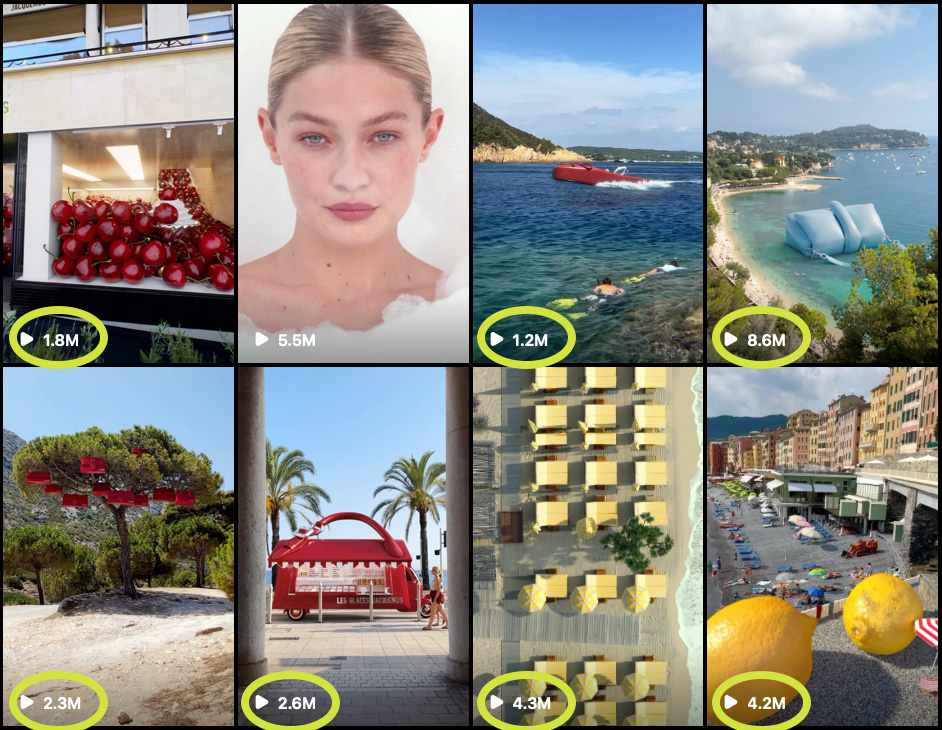
Believe it or not, Fake Out of Home ads are relatively cost-effective compared to traditional out-of-home advertisements such as billboards or bus stop ads. With Fake Out of Home, you don't need to pay for physical space or printing costs; you only need an excellent CGI and video production team.
And with social media platforms offering targeted advertising options, brands can reach their desired audience without spending on expensive billboards that may not even be seen by their target market.
Plus, FOOH ads are a great cost-saving method for testing a new campaign idea or product before investing in a full-scale traditional marketing campaign. Producing a FOOH asset is relatively quick, making it perfect for testing new ideas.
With various short-form content on Instagram Reels, FB shorts, and TikTok competing for views, going viral organically can be challenging. FOOH ads have a wow factor that stays with your viewers, making them more likely to share it with their friends and followers.
Take Alexander Wang's huge FOOH CG installation, for example. It received over 50 million views on Instagram, compared to the hundreds of thousands or several million views of their more normal posts. Going viral means more exposure for your brand and the potential to reach new audiences.
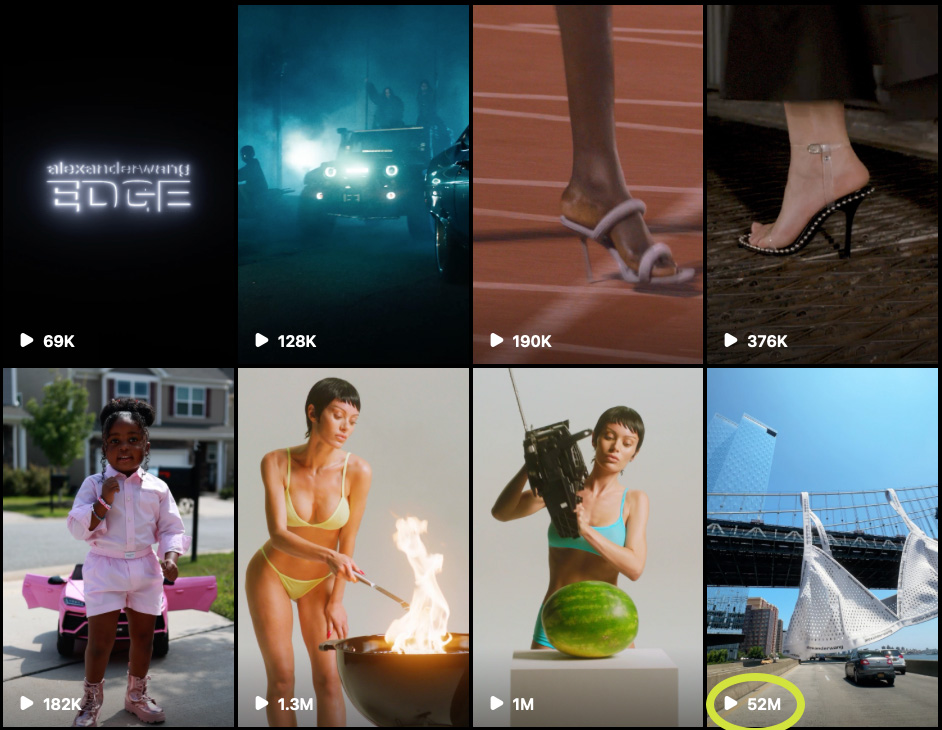
As brands and consumers become more conscious of the impact of consumption on the environment, Fake Out of Home ads offer a more environmentally friendly solution to advertising. With no need for physical materials or space, these ads significantly reduce carbon footprint and waste.
You don't have to fly out your creative team and spend on transportation, accommodations, and production materials to install a physical ad. Plus, with digital tracking and monitoring, brands can easily see the performance of their Fake Out of Home ads in real-time and make adjustments as needed without wasting paper or material.
Your ads also don't need to be reinstalled repeatedly because they were ruined by the weather or vandalized, as it does with more traditional forms of advertising. With the rise of green and sustainable branding, FOOH ads can give your brand a competitive edge.
Fake Out Of Home ads often get negative connotations because of the "Fake" aspect. Some people argue that it's misleading and unethical, while others champion that it's simply a new and creative way for brands to showcase their products.
Another potential consideration is the legality of using certain locations or landmarks in FOOH ads. These ads will often hinge on footage of recognizable locations, and brands must be careful not to infringe on copyrights or trademarks.
You might need to obtain permission or pay licensing fees to use certain locations in your Fake Out Of Home ad campaigns, which is why it's crucial to work with a creative team that truly understands the legalities and best practices of using CGI in advertising.
At rendersnek, we do our homework in researching and obtaining any necessary permissions to ensure your FOOH ads are both effective and ethical. Got a question or an idea? We'd love to hear from you.
FOOH advertising has revolutionized how brands advertise, allowing you to advertise in places where you could never reach before, in ways that traditional advertising could never do. Because of its cost-effectiveness and high-engagement potential, it's no wonder more and more brands are going crazy for this type of advertising and taking a bite out of FOOH pie.
And the numbers don't lie either. FOOH ads have been proven to be more effective in capturing attention and driving engagement than traditional out-of-home forms of advertising. It’s safe to say that this trend is going nowhere and is here to stay, so this is certainly an exciting time for marketers and advertisers to explore the endless possibilities that FOOH ads can offer for their brand.
Our suggestion: Give fake out of home advertisement a try!
If your ads are no longer getting the retention that you need, you might wish to switch up the way you’re doing things.
That’s what Vapiano CGI Video advert did.
The result?
400,000 views within the first few hours.
And that is what made World Pasta Day a moment to remember!
…
Old-fashioned advertising doesn't work well anymore because technology keeps changing. Brands that want to sell things should work with creative agencies that can keep up with new trends.
In today's fast-paced (advertising) world, capturing and holding a viewer's attention has become an art. It's a skill that demands focus, storytelling, and captivating visuals to keep eyes glued to screens.
So, if you’re wanting 2+ mio. unique views on your next advert, maybe the following insights of our project with Vapiano in collaboration with Traktor Wien agency will help.
In one sentence: Consistently showing up on social media.
Especially as a very young company with little connections in the marketing world, it is not easy to find clients. It’s so competitive that you need something unique. Something that shows you care about the work you do - in our case mostly "Fake Out Of Home Videos".
Our social media tactic: posting once a week, interacting with agencies and brands, try new stuff and not just have a portfolio page.
So, showing up on social media eventually lead, Traktor Wien Agency, whos motto is to do advertising for people who actually don’t like advertising, to our Instagram page and that’s how we ended up getting a good old email in our inbox.
After one or two weeks of DMs sharing ideas, a vision for celebrating World Pasta Day took shape. Vapiano's dream of creating an eye-catching advertisement became a reality.
Challenge 1: Attention
Grabbing attention in the first 1.5 seconds is a known fact to everyone who does social media.
Otherwise, attention is gone, and every click or action associated with it is also gone and of course so is the revenue it brings.
So, to grab the attention in the first place, things needed to happen, a lot of things. At first the viewer can spot the car with a gigantic vapiano take away box on the roof. Then you notice two people walking in from the left side, pointing at the facade, which was filled with hyperdimensional spaghetti.
And last but not least, it’s not enough to grab the attention, you also want to hold it. So as soon as the viewer is done with checking out the façade, the two vapianisti are already opening the double door to reveal an avalanche of penne and fusilli.
Challenge 2: Environment
Since the video was shot in a busier street (almos Mariahilferstraße), we already needed to pick a timeframe where there’s little people, but also where we would have a nice lighting. We checkout the place in different times of the day and decided for the morning between 8:00 am and 9:00 am. Everything seemed perfecet on the day of the shooting, but there is always something that you don’t have influence on. In our case that bulky jeep, that was parked in front of the building. Which was of course not exactly what we wanted when we first started filming.
Whilst it wasn’t ideal, we had to use our surroundings to our advantage and create storyboards based on everything around us – this is how we came up with the gigantic takeaway box infront of the building.
Challenge 3: Food
As already mentioned, the probably biggest challenge was to stage the food in a way, that the viewers first thought isn’t – “yuck, there’s food on the street”.
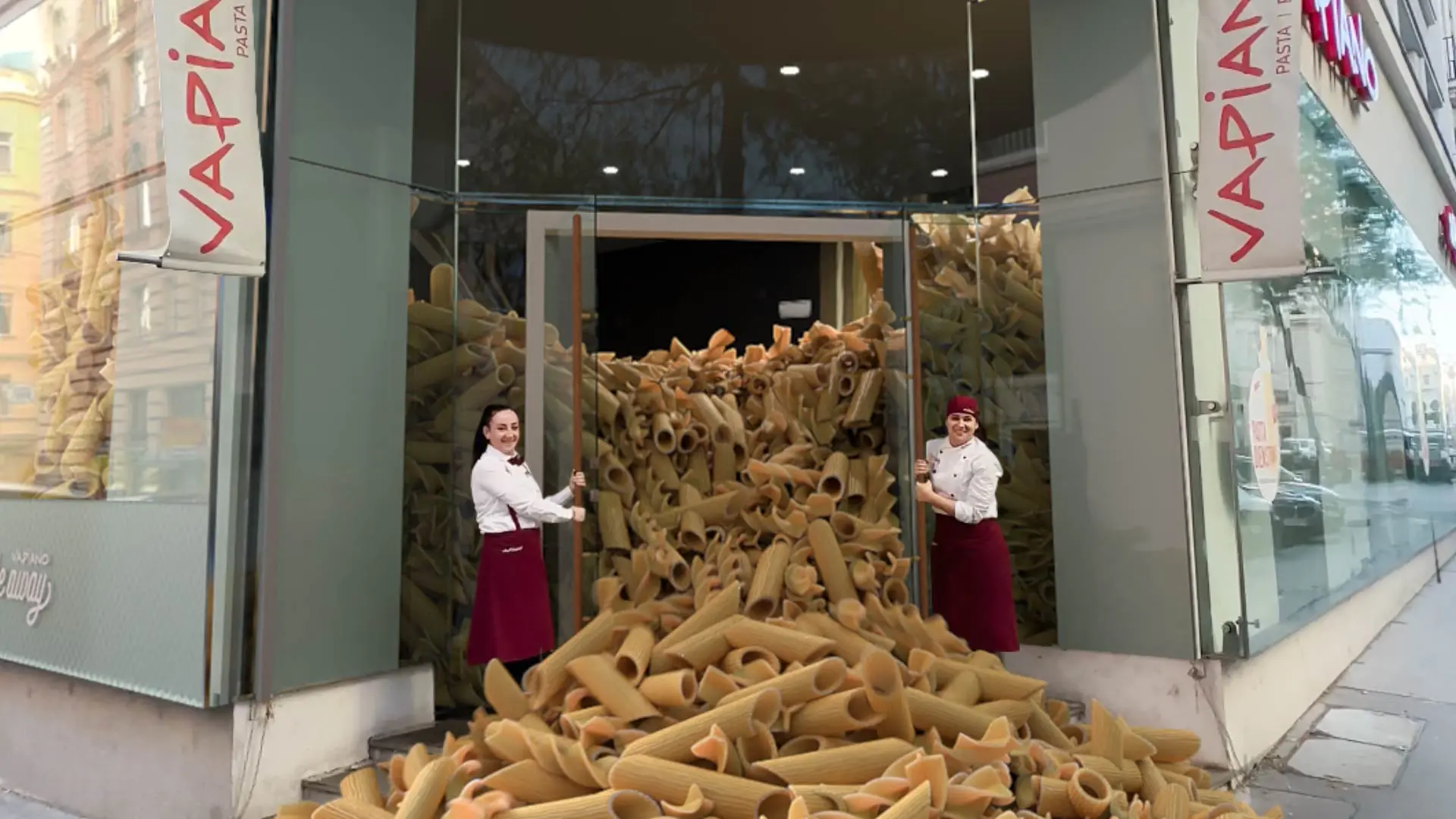
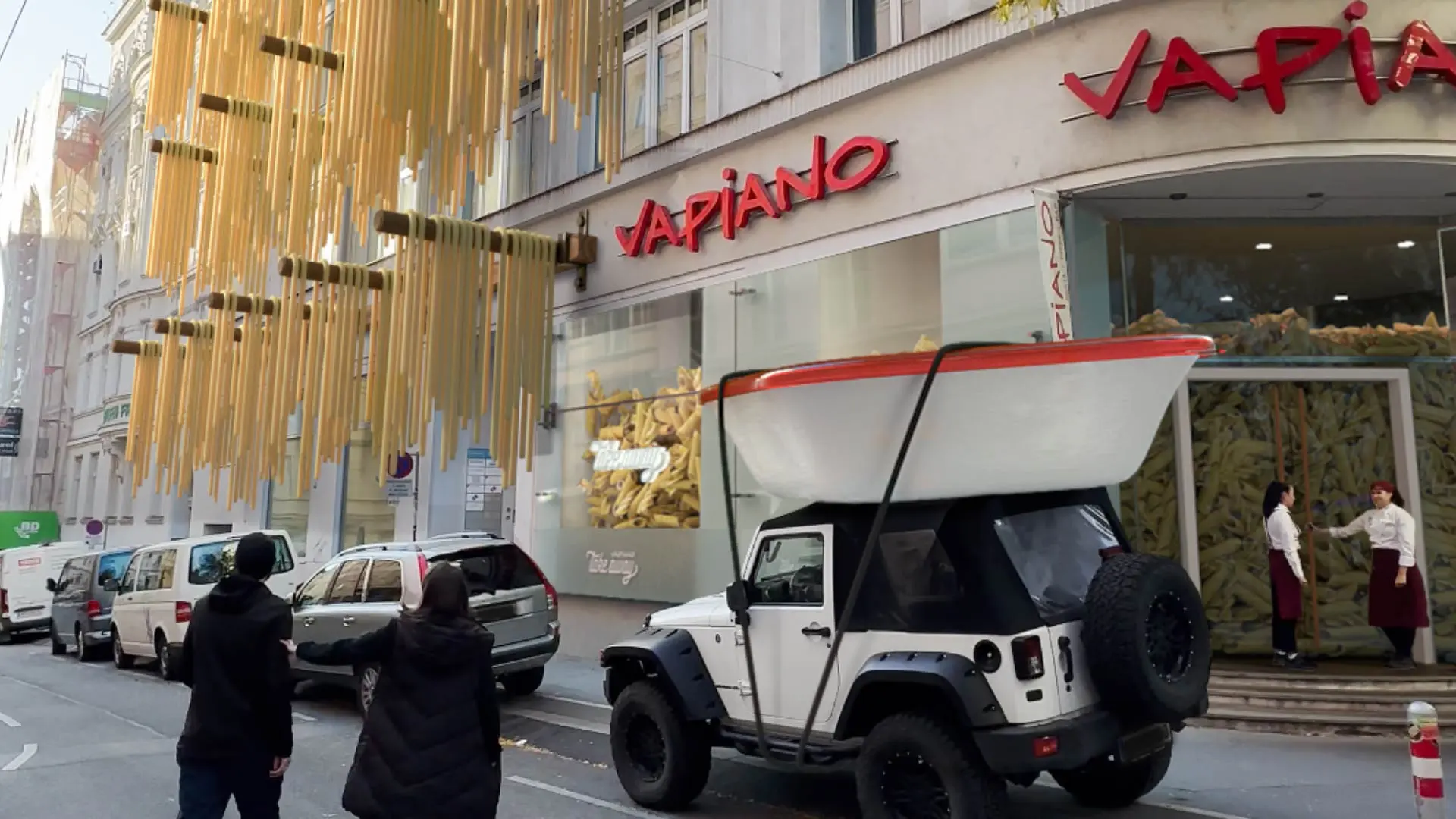
And so, we had to ensure that the fusilli-penne-avalanche simulation looked appetizing, which already was a challenge, because nobody ever saw a pasta avalanche of this size.
Challenge 4: Actors
The last challenge was the human challenge, because when you shoot the video, nothing is there yet. The actors need to understand what will happen in the after production and where everything will be placed. So it’s crucial to have a very detailed idea of what will happen, because you can change pretty much everything in the video, but the reaction of the humas to it is something that can’t be changed.
Our guess is a combination of the many impressions the viewer already has in the first 2 seconds, plus the fact that nobody had ever seen a scene like that before. A fun, entertaining video that invited people to come to the restaurant. It didn’t even feel like an ad.
Rendersnek's collaboration with Traktor Wien Agency for Vapiano's World Pasta Day campaign is a prime example of how CGI can be effectively integrated the advertising industry.
As the world of advertising evolves, standing out becomes crucial. It is understanding what captures attention and keeps viewers engaged that helps to make purchase decisions.
The combination of CGI, reality and attention to detail can turn an everyday scene into a spectacle.
As the lines blur between reality and CGI, this project exemplifies the boundless creativity of the advertising world, turning the ordinary into the extraordinary.
The digital age has brought forth a myriad of innovations, and among the most transformative are CGI and Mixed Reality. These technologies, especially CGI Compositing, have redefined the boundaries of content creation, offering unparalleled opportunities for storytelling. But what makes CGI Compositing stand out in the vast sea of digital innovations?
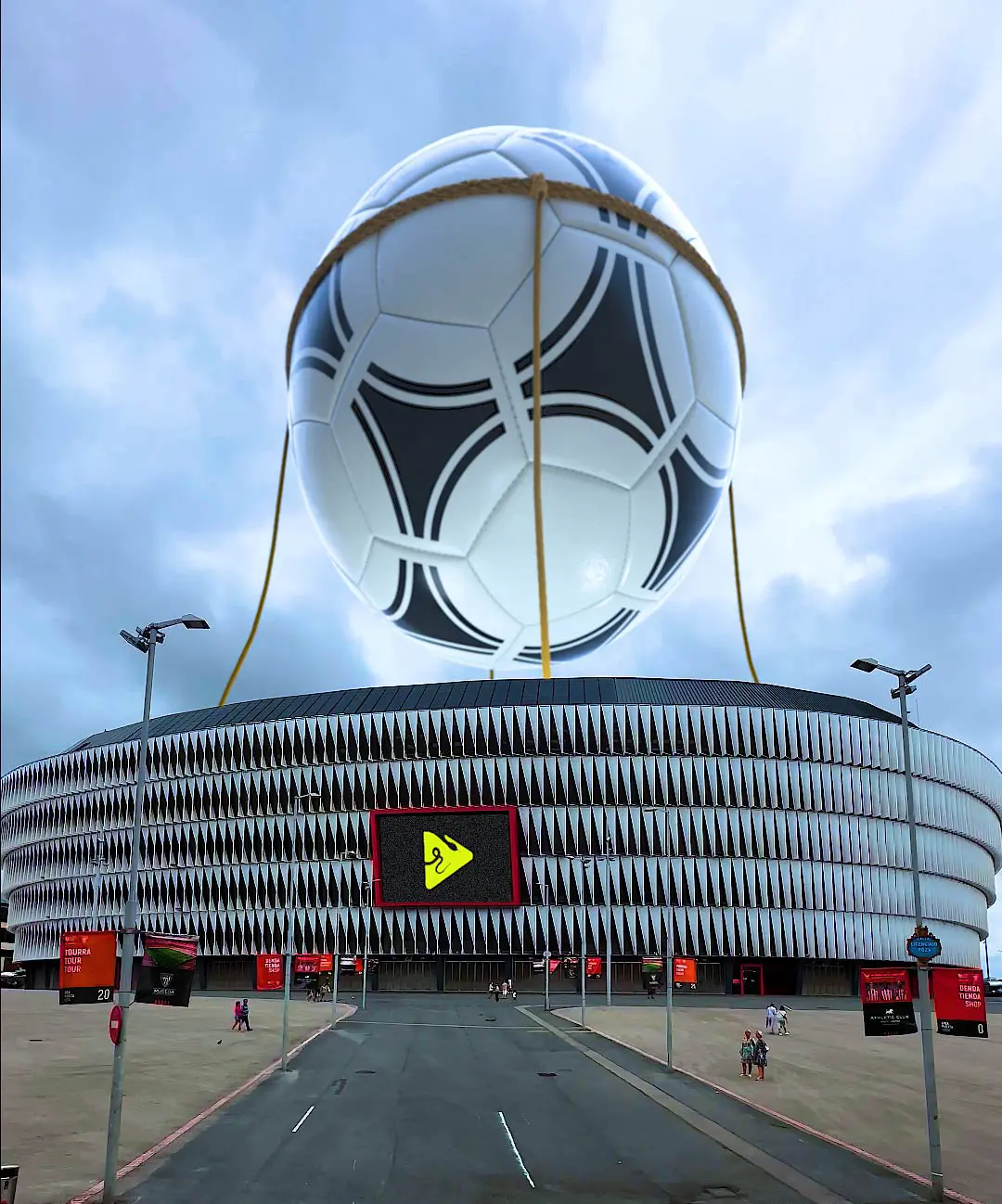
Computer-Generated Imagery, or CGI, has revolutionized the way content creators visualize their ideas. It allows for the creation of visuals that transcend the constraints of reality. From the fantastical landscapes we see in movies to the hyper-realistic product demonstrations in advertisements, CGI offers limitless possibilities. The real magic of CGI lies in its ability to immerse the audience, making them forget the distinction between reality and fiction. With the rise of Mixed Reality Videos, products can now be placed in virtually any environment, blurring the lines between the real and the virtual.
While CGI offers an escape from reality, Mixed Reality (MR) seamlessly blends the real and virtual worlds. MR creates interactive environments where physical and digital objects coexist, enhancing user experiences and making them more immersive and engaging. For brands, this means a unique opportunity for storytelling, allowing them to craft interactive narratives where users can actively participate, forging a deeper connection with the content.
2023 marked the emergence of "Fake Out Of Home advertising" or Fake OOH. These are essentially Mixed Reality Videos that combine real footage with computer-generated imagery (CGI). In simpler terms, it's about tracking 3D objects in conventional videos. While the concept of CGI isn't new (Hollywood has been using it for decades), its application in advertising, especially in the form of Fake OOH, is gaining traction. Brands are leveraging this technique to create ads that stand out and go viral organically, especially on platforms like TikTok and Instagram.
The potential of CGI and MR is undeniable. However, they come with their set of challenges. High-quality CGI and MR content require significant resources, both in terms of technology and expertise. Striking the right balance between reality and virtual elements is crucial to ensure the content remains relatable and authentic. The debate around the authenticity of CGI in advertising continues, but what's clear is that its success depends on execution, brand alignment, and audience engagement.
Innovations like CGI and Mixed Reality are blurring the lines between reality and imagination. For content creators, these tools offer an exciting playground to experiment and innovate, pushing the boundaries of storytelling. As the digital landscape evolves, CGI Compositing will undoubtedly play a pivotal role in shaping the future of content creation.